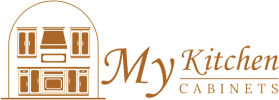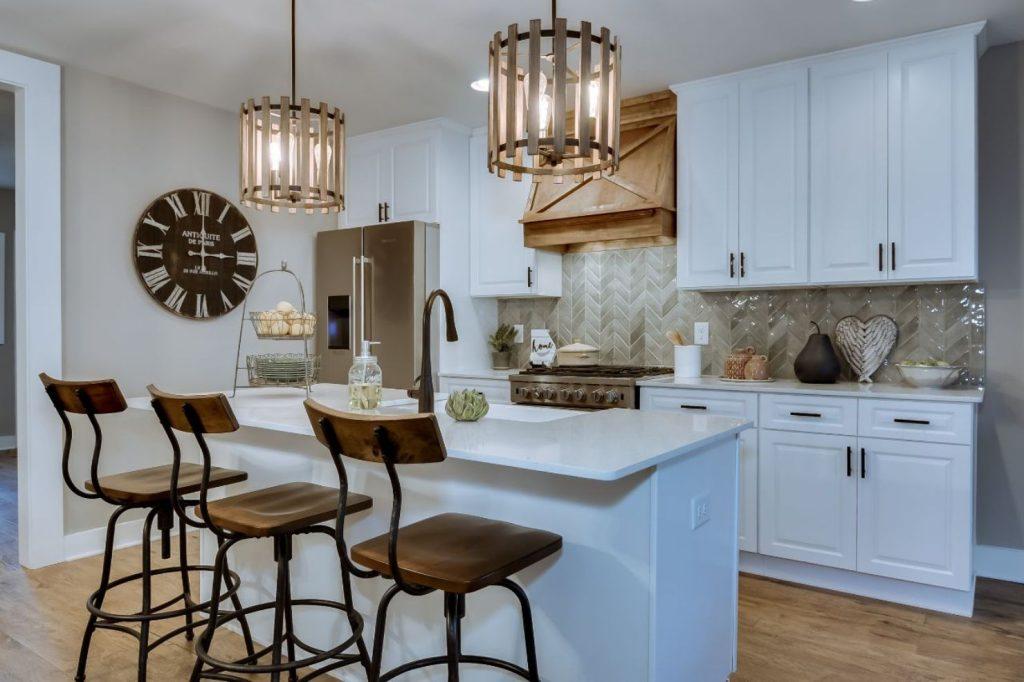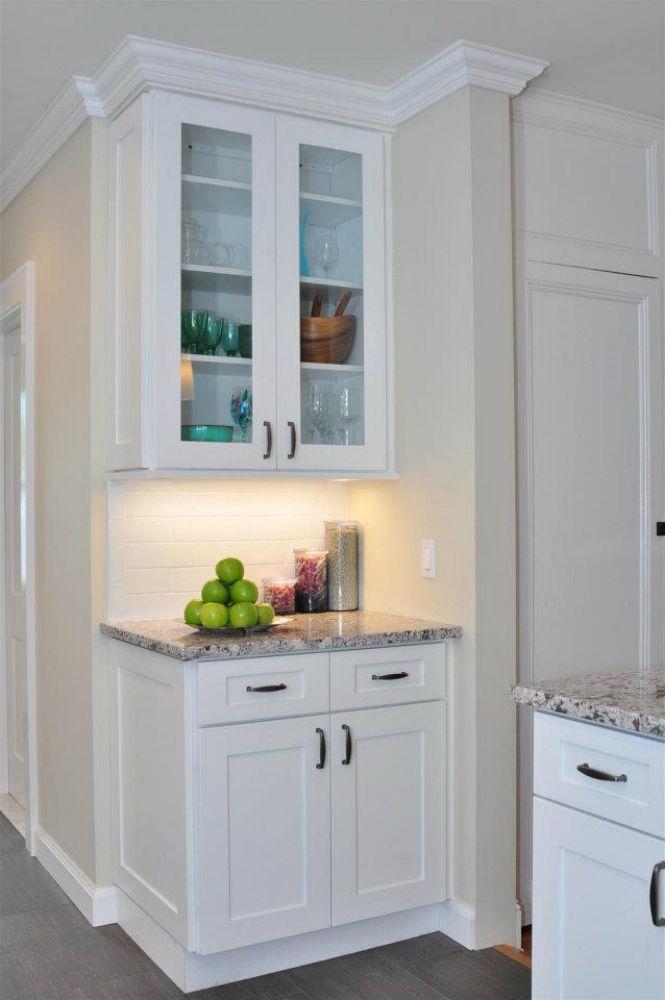Replacing Your Kitchen Cabinets: All the Costs Involved
In this comprehensive guide, we will address the most frequently asked questions about replacing your kitchen cabinets. Whether you’re considering a kitchen renovation or simply want to update your cabinets, understanding the costs involved is crucial. We will cover everything from the initial budgeting to the installation process. Let’s dive into the details.
Question 1: How Much Does It Cost to Replace Kitchen Cabinets?
Replacing kitchen cabinets can vary widely in cost, depending on several factors. The average cost can range from $5,000 to $20,000 or more. Here’s a breakdown of the main cost factors:
- Cabinet Materials: The type of materials you choose significantly impacts the cost. Options range from budget-friendly laminate to high-end hardwoods.
- Cabinet Size: The number and size of cabinets you need will affect the overall cost. Larger kitchens require more cabinets and thus a higher budget.
- Cabinet Style: Intricate or custom cabinet designs tend to be more expensive than simple, off-the-shelf options.
- Labor Costs: Hiring professionals for installation will add to the total expenses. Labor costs can vary based on location and the complexity of the job.
- Additional Features: Extras like pull-out shelves, soft-close drawers, or decorative hardware can increase the cost.
- Finishes and Paint: The finish you choose, such as stained wood or painted cabinets, can impact the price.
To get an accurate estimate, it’s advisable to consult with kitchen remodeling professionals and obtain multiple quotes. This will help you create a budget tailored to your specific needs and preferences.
Question 2: Should I Reface or Replace My Kitchen Cabinets?
Deciding between refacing and replacing your kitchen cabinets depends on your goals and the condition of your existing cabinets.
Cabinet Refacing: This is a cost-effective option where you keep the existing cabinet framework and replace only the cabinet doors and drawer fronts. It’s a suitable choice if your cabinets are structurally sound but need a cosmetic update. Cabinet refacing typically costs less than a full replacement and can save you around 30-50% of the cost.
Cabinet Replacement: If your cabinets are outdated, damaged, or you want to change the layout, a full replacement is the way to go. This involves removing the old cabinets and installing new ones. While it’s a more significant investment, it allows for more customization and a completely fresh look.
Consider your budget, the condition of your current cabinets, and your design preferences when making this decision.
Question 3: What Are the Different Cabinet Material Options?
When replacing kitchen cabinets, you have various material options to choose from, each with its own price range and aesthetic appeal. Here are some common cabinet materials:
- Solid Wood: This is a premium option known for its durability and classic look. Hardwoods like oak, maple, and cherry are popular choices but can be more expensive.
- Plywood: Plywood cabinets are a cost-effective alternative to solid wood. They are sturdy and resistant to warping.
- MDF (Medium-Density Fiberboard): MDF cabinets are made from compressed wood fibers and offer a smooth, paintable surface. They are a budget-friendly choice.
- Laminate: Laminate cabinets are affordable and come in a variety of colors and patterns. They are easy to clean but may not be as durable as other materials.
- Thermofoil: Thermofoil cabinets have a vinyl coating over MDF or engineered wood. They are budget-friendly and available in various styles.
- Metal: Metal cabinets, such as stainless steel, provide a modern and industrial look but can be more expensive.
The material you choose should align with your budget, style preferences, and maintenance expectations.
Question 4: How Do I Budget for Cabinet Replacement?
Creating a budget for replacing kitchen cabinets involves a thorough assessment of your financial situation and project requirements. Here’s a step-by-step guide:
- Determine Your Total Budget: Calculate how much you can afford to spend on the entire project, including materials, labor, and any additional features.
- Prioritize Needs vs. Wants: Identify essential elements, such as cabinet quality and layout changes, versus optional features like decorative hardware.
- Get Multiple Quotes: Contact several contractors or cabinet suppliers to obtain detailed quotes. This will help you understand the range of costs involved.
- Include Contingency Funds: Set aside a portion of your budget for unexpected expenses that may arise during the project.
- Consider Financing Options: Explore financing options like personal loans or home equity loans if your budget falls short.
- Stick to Your Budget: Once you have a budget in place, try to stay within it by making informed decisions and avoiding unnecessary upgrades.
Planning your budget meticulously will ensure a smoother cabinet replacement process without financial surprises.
Question 5: How Long Does It Take to Replace Kitchen Cabinets?
The timeline for replacing kitchen cabinets can vary depending on several factors:
- Cabinet Selection: Custom cabinets may take longer to manufacture than off-the-shelf options.
- Kitchen Size: Larger kitchens with more cabinets will require more time for installation.
- Design Complexity: If your design includes intricate details or custom features, it may extend the timeline.
- Demolition: The removal of old cabinets is a necessary step and can take a day or two.
- Installation: Installing the new cabinets typically takes a few days to a week.
- Additional Work: If you’re making other changes to your kitchen, such as flooring or countertops, this can add to the overall timeline.
On average, a kitchen cabinet replacement project can take anywhere from two to six weeks. It’s essential to discuss the timeline with your contractor and plan accordingly, especially if you have specific deadlines or events.
Question 6: Can I Save Money by Installing Cabinets Myself?
While DIY cabinet installation can save you money on labor costs, it’s not recommended for everyone. Here are some factors to consider:
- Skill Level: Cabinet installation requires precise measurements and carpentry skills. If you’re inexperienced, mistakes can be costly.
- Tools: You’ll need specialized tools, including a level, drill, and saw, to ensure proper installation.
- Time: DIY installation can take much longer than hiring professionals, which could disrupt your kitchen use for an extended period.
- Warranty: Some cabinet manufacturers may void the warranty if not installed by professionals.
If you’re confident in your carpentry skills and have the necessary tools, DIY installation can be a cost-effective option. However, for a seamless and stress-free experience, it’s often best to hire experienced cabinet installers.
Question 7: What Are Some Cost-Saving Tips for Cabinet Replacement?
If you’re looking to replace kitchen cabinets on a budget, consider these cost-saving tips:
- Refacing or Repainting: If your existing cabinet boxes are in good condition, consider refacing or repainting them to save on material costs.
- Ready-to-Assemble (RTA) Cabinets: RTA cabinets are budget-friendly and come in flat-pack kits, reducing shipping costs.
- Shop for Sales and Discounts: Keep an eye out for sales, promotions, and discounts on cabinets, hardware, and countertops.
- Reuse Hardware: If your cabinet hardware is in good condition, consider reusing it to save on replacement costs.
- Limit Customizations: Custom cabinets can significantly increase costs, so opt for standard sizes and finishes whenever possible.
- Choose Affordable Materials: Select budget-friendly materials and finishes that still meet your aesthetic preferences.
- Plan Efficient Layouts: Avoid unnecessary layout changes, as they can require more labor and materials.
By carefully considering these tips, you can reduce the overall cost of your cabinet replacement project without sacrificing quality.
Question 8: Are There Any Hidden Costs When Replacing Cabinets?
When budgeting for cabinet replacement, it’s essential to be aware of potential hidden costs that may arise during the project. These can include:
- Structural Repairs: If your kitchen requires structural repairs, such as fixing damaged walls or floors, this can add to the overall cost.
- Plumbing and Electrical Work: If you’re changing the layout or adding new appliances, you may need to update plumbing and electrical connections.
- Permits and Fees: Check if your local municipality requires permits for cabinet replacement, as this can incur additional costs.
- Unexpected Damage: Once old cabinets are removed, hidden damage to walls or floors may be revealed, necessitating repairs.
- Delivery Fees: Some cabinet suppliers charge delivery fees, so clarify this with your supplier.
- Additional Features: As you progress with the project, you might decide to add extra features or upgrades that weren’t initially planned, increasing costs.
To avoid surprises, consult with your contractor, obtain detailed quotes, and include a contingency fund in your budget.
Question 9: What Are the Benefits of Investing in High-Quality Cabinets?
Investing in high-quality kitchen cabinets offers several advantages:
- Durability: Quality cabinets are built to last, reducing the need for frequent replacements.
- Aesthetic Appeal: High-quality materials and craftsmanship enhance the overall look and value of your kitchen.
- Functionality: Well-constructed cabinets often come with advanced features like soft-close drawers and pull-out shelves for improved functionality.
- Resale Value: Upgrading your kitchen with high-quality cabinets can increase your home’s resale value.
- Long-Term Savings: While the initial cost may be higher, quality cabinets can save you money in the long run by avoiding repairs and replacements.
When budgeting for your cabinet replacement project, consider the long-term benefits of investing in quality materials and workmanship.
Question 10: What Maintenance Is Required for Kitchen Cabinets?
Proper maintenance is essential to ensure the longevity and beauty of your kitchen cabinets. Here are some maintenance tips:
- Regular Cleaning: Wipe down cabinet surfaces with a damp cloth to remove dust and grime. Avoid using abrasive cleaners that can damage the finish.
- Avoid Excess Moisture: Be cautious with spills and moisture, as prolonged exposure can harm wood and finishes.
- Check Hardware: Periodically inspect and tighten cabinet hardware to prevent loose knobs or handles.
- Reapply Finish: If your cabinets have a protective finish, consider reapplying it when signs of wear appear.
- Prevent Scratches: Use felt or soft material under objects that may scratch the cabinet surfaces.
- Keep Sharp Objects Away: Avoid cutting or chopping directly on cabinet surfaces to prevent damage.
By following these maintenance tips and addressing any issues promptly, you can extend the life of your kitchen cabinets and keep them looking their best.
In conclusion, replacing your kitchen cabinets involves various considerations, including budgeting, materials, installation, and maintenance. By understanding the costs and factors involved, you can make informed decisions to create a functional and aesthetically pleasing kitchen that suits your needs and preferences.
Conclusion
In conclusion, replacing your kitchen cabinets is a significant undertaking that requires careful planning and consideration. Throughout this comprehensive guide, we’ve explored the most commonly asked questions about this process, covering everything from budgeting and materials to installation and maintenance.
It’s essential to approach cabinet replacement with a well-defined budget that accounts for various cost factors, including materials, labor, and any unexpected expenses. Whether you choose to reface or replace your cabinets, selecting the right materials and style is crucial to achieving the desired look and functionality for your kitchen.
Understanding the time frame involved in the project and whether you have the skills for a DIY installation are critical decisions. While DIY can save on labor costs, professional installation ensures a seamless and stress-free experience.
We’ve also discussed cost-saving tips, the benefits of investing in high-quality cabinets, and the importance of proper maintenance to ensure your cabinets stand the test of time.
In summary, replacing your kitchen cabinets is an investment that can significantly enhance the aesthetics and functionality of your kitchen. By carefully considering your budget, materials, and design preferences, you can embark on this renovation journey with confidence and create a kitchen that not only meets your needs but also adds value to your home.
Read: Utilizing Kitchen Cabinets to Maximize Storage Space
Read: Low Maintenance Kitchen Cabinets That Will Stand the Test of Time


